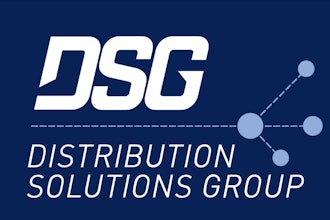In parts of North America, millennials and Generation Xers are parting ways with the television cable box. They are taking advantage of other ways — often at little or no charge — to watch television and movies and find other forms of entertainment.
It’s referred to as “breaking the cord,” and it’s a concern for many distributors marketing a wide range of products used to operate buildings. These distributors are starting to wonder if some younger people, now in management positions, will soon be breaking the cord with distributors who have historically marketed products directly to facility managers and administrators.
Here’s the issue in a nutshell:
Millennials and Generation Xers are the first generations that have essentially transferred from shopping for products — everything from shirts and shorts to paper products and cleaning supplies — at brick-and-mortar stores to shopping through online retailers. They prefer purchasing this way. But because their numbers are growing so fast, they are highly educated and they are quickly entering and rising in management positions, distributors want to find new ways to still attract their business.
Size and Scope
Let’s examine some of the stats regarding these younger generations in North America:
- Generation X typically refers to people born between 1966 and 1979.
- Millennials were born from 1980 through 1994.
- In Canada, approximately one million people fall into these categories.
- In the United State, Generation X numbers approximately 40 million people and millennials number about 70 million.
- About 70 percent of Canadians in these two groups are college educated.
- In the United States, about 60 percent of the people in these groups are college educated.
- In less than 10 years, three out of four workers in a variety of industries will be millennials.*
However, the stat most concerning to distributors is the following: A study conducted by eMarketer finds that 40 percent of millennial males and more than 33 percent of millennial females “would buy everything online if they could.” And because this study was conducted three years ago, it’s likely that those percentages are even higher today.
Enter the Consultant
Astute distributors are aware of these facts and figures. However, distributors tend to be “survivors”; their industry — specifically related to professional cleaning — has had many ups and downs since the 1990s.
So how are distributors surviving in a world where many of the people they will be working with prefer to buy everything online and without their help? Simply, they are becoming consultants, something no online marketplace can become. Instead of simply marketing products to customers, they are offering “consultative selling,” to help the customer get exactly the product that will work best for their facility.
Consultative selling refers to a method of selling in which distributors spend more time with customers in order to better understand their priorities, needs, and challenges. Armed with this knowledge, they attempt to recommend solutions that will address these issues. It’s different from a traditional sales approach in that it involves suggesting solutions to a problem rather than just focusing on selling a specific product.
It is interesting to note that the consultative selling approach evolved in the 1950s as a new generation of people entered the workplace after World War II. They tended to be less interested in “product pushers” and more interested in working with consultants. By the 1970s, this form of selling had pretty much disappeared. A rebirth occurred about fifteen years ago, depending on the industry.
How does consultative selling work?
Assume a building manager wants to reduce purchasing costs for cleaning products but has no idea where to start. Going online quickly becomes a trial-and-error process. She or he may select a new product for the facility—for instance, a floorcare cleaning solution—because it is less expensive, only to encounter results such as these:
- The new floorcare product does not work as effectively as the one being replaced.
- While the sticker price of the product is less, due to dilution ratios, it ends up actually costing more in the long run.
- Even though it is green certified, it has a negative impact on indoor air quality.
The distributor, now a consultative salesperson, can prevent this from happening, so the client can make educated decisions, ending the trial-and-error/cross-your-fingers approach. This process involves a lot of communication between the facility manager and distributor — asking the right questions and discussing the many needs of the facility — before a buying decision can be reached.
To find solutions, often the distributor and customer turn to new technologies. While there are different systems available, some distributors now have access to cloud-based “dashboard” systems that can help the distributor and the client — working together — compare products based not only on price but on which products might work best in their facility.
There are also free software systems –— often referred to as “processes” — available in which facility managers can do a lot of their own research, something millennials and Generation Xers like. Essentially, these systems help managers “peel off the roof” of their facilities, to get a good look inside, to better understand their building needs and view procurement solutions.
However, as effective as some of these systems are, the trial-and-error/cross-your-fingers purchasing just mentioned can still occur. Ultimately, managers are best served to call in a distributor before making the final purchase.
While millennials and Gen Xers may feel perfectly comfortable purchasing shirts and shorts online, when it comes to the hundreds of different products available for cleaning a facility, as an example, making the wrong purchasing decisions can negatively affect many building users, the appearance and health of the facility and could actually end up increasing costs.
*Sources: Statistics Canada 2013; eMarketer, August 2013; Studies by the Boston Consulting Group and the University of Alabama Research Group.
Michael Wilson is Vice President of Marketing for AFFLINK, developers of the ELEVATE process, an online system that allows users to learn about and select products that will help operate their facilities in a greener, more sustainable, healthier, and more cost effective manner. He can be reached through his company website at www.AFFLINK.com























